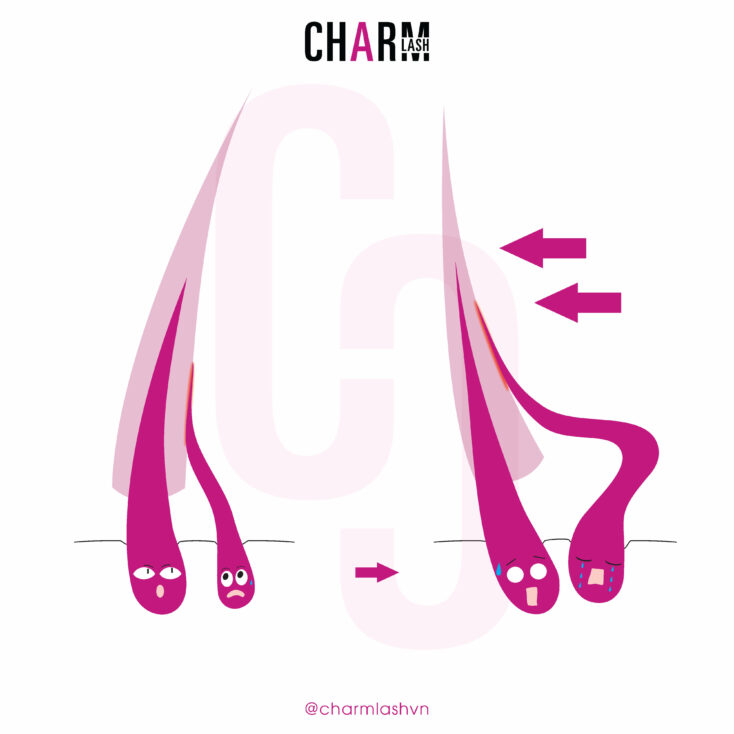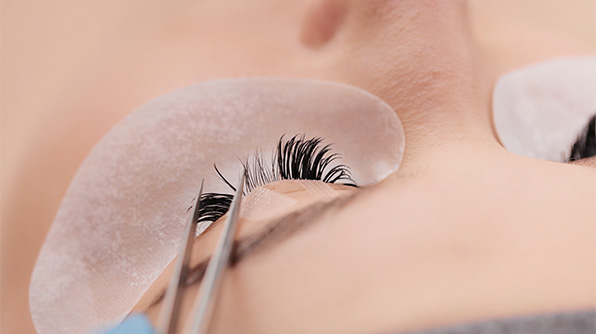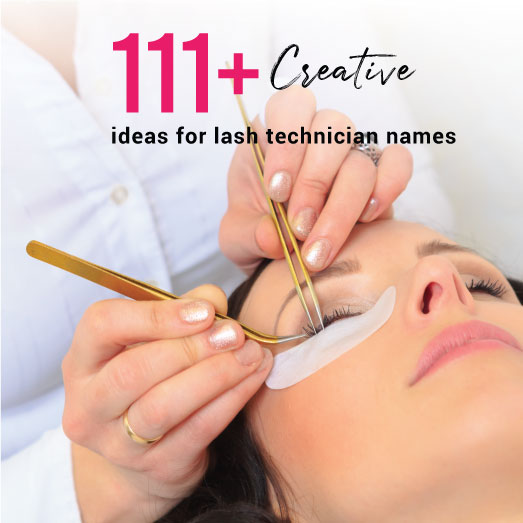No matter how careful you are during the lash application process, lash stickiness is unavoidable. Being aware of this problem and following these tips during the procedure will help maximize your clients’ satisfaction and the reputation you gain.
1. What is lash stickiness?
Lash stickiness, or lash stickie, is a slang term in the lash industry describing a lash that gets stuck in a neighboring lash during the extension procedure. This problem results from multiple factors, but generally, they boil down to three common reasons:
Humidity and moisture level
The lower the moisture level in your room, the slower the lash glue dries. If you don’t notice this unexpected drying speed of glue and continuously move on to the next lash without waiting for a complete dry, lash stickies will occur. This is why you should always be mindful of the humidity in the surrounding area. Remember to keep a hygrometer in your lash studio, or find yourself a lash glue that performs well even in unstable room conditions. For this, we highly recommend you try our Lady Bond.


Excessive adhesive application:
Too much adhesive not only makes the bond look clumpy but also slows down its drying time. Like how low humidity affects your eyelashes, the excess glue amount will lead to eyelashes sticking together.
Improper curing and drying of glue:
The top requirement for a proper lash adhesive is that it must suit your lashing level, or else you will run into a lot of trouble during the lashing process. For example, if you’ve achieved advanced skills but your lash glue needs up to 3-4s to dry, your rush through the lashes might leave the lashes looking like a mess after the session.
Another case is that your glue is of low quality or has expired. This leads to improper curing and drying times and ends up with a completely failed lash extension set.
2. Type of stickiness
A baby lash sticks to an extension:
This is the most common type of stickie, as tiny baby lashes are hard to notice and isolate.
What’s worse, because the young lashes are in their resting stage (also known as the Telogen phase), they grow much quicker than the grown-up lashes.
This robust growth can force the baby lash to push the extensions it’s stuck to to the side and leave you with a messy lash look.

One extension on two natural lashes:
Careless isolation can also lead to two natural lashes attaching to one extension. If the growing speeds of the two lashes are not the same, the faster one can pull the other out and damage its follicle.

Two extensions sticking together:
This stickie type is mainly caused by the inordinate amount of glue, which makes the lash set look clumpy. However, it’s quite easy to notice and separate them apart. A careful check after finishing the treatment will fully address this problem.

Top and bottom eyelashes sticking together
If the bottom lashes are not carefully held by the eye pad or tape during the lash process, the pop out ones can stick to the upper lashes. Therefore, when you have finished the set, remember to ask your clients to blink several times and make sure they don’t feel the stickiness when they open their eyes.
3. Effects of lash stickiness
If lash stickiness is not identified during or right after the lash set is done, it can have severe implications for your clients’ lashes as well as your business.
Poor lash retention and risk of lash damage
In fact, lash stickiness can, in some cases, cause pain to your clients, make them unintentionally rub their lashes, and severely damage the adhesive bond.
Moreover, if the lashes don’t stay separately and healthily together, when you use the lash brush to brush your lash set, the extensions on the stickie lashes are very likely to fall out. Worse, it can also pull out both the natural lashes and the extensions and damage the follicles.
Bad lash look
Lash stickiness pushes the lashes in the wrong directions, making the lash set look tangled and clumpy. But remember that your clients come to your lash studio for full and fluffy lash extensions, not to mess up their lashes.
Client discomfort and dissatisfaction
An undesired lash look after pouring a lot of money into it will badly affect your business image in your clients’ minds. This is when you feel like your mountain of effort has collapsed!
4. How to prevent lash stickiness?
Although lash stickiness can be annoying, there are many ways to stop this issue during your lash sessions.
Careful lash isolation
Poor isolation can cause most types of lash stickies. Therefore, separating eyelash extensions correctly with the right tweezers is essential. Every lash artist has their own preference when it comes to choosing tweezers, but for lash isolation, we highly recommend the straight tweezer. This lash tweezer is specifically designed for lash isolation and to prevent the dreaded lash stickies.

Proper lash adhesive choice
If you are facing lash adhesive troubles, you know it’s time to consider a switch. A proper lash adhesive must be suitable for your lashing level and the environmental conditions in your area.
At CharmLash, we provide a wide range of glue choices to satisfy all our diverse and strict customers’ demand and requirements. Check out CharmLash on Alibaba for more!
Correct glue application techniques
Using the right amount of glue on the extensions requires proper technique. Dip the lashes into the middle of the glue dot and let it cover about 2mm of your lash base (ideal attachment area) and gradually slide out. No deep dip, quick pullout, scooping, or skimming!
Watch our video for detailed guideline!
Adequate curing and drying process
Keep the lash isolated for a couple of seconds to make sure the bond is completely dry before going on to the next lash.
Right lash techniques
Lashing in layers:
After the pretreatment, lift the lashes back with surgical tape and use your tweezer to pull the bottom lash layer out and lash them first. Then work through each layer until you have extended the whole set. In this way, it’s much easier for you to isolate the lashes and spot the baby lashes.
A small note is that you shouldn’t press the tape too hard, or it can damage your natural lashes.
Carcass:
Not lash by lash, this method applies one lash and skips several neighboring lashes. After the first lash is fully dry, you return to the unlashed and extend them. This method is more simple and safer, but remember to isolate for a sufficient amount of time to prevent lash clumping.
5. How to fix lash stickiness
We know that lash stickiness is hard to avoid in the lash session, and you don’t need to feel bad about yourself when you make this mistake. Remember to check the whole set thoroughly to identify the sticky lashes and remove them. For the correct way to take the lash off, you can read our blog: How to remove eyelash extensions properly?
If you are a newbie in the lash field, it’s okay if your lash set has several sticky lashes. The thing is, you carefully check your work after the treatment and improve your skills over time. Try to take part in more education and training courses to take your lash career to the next level!




















